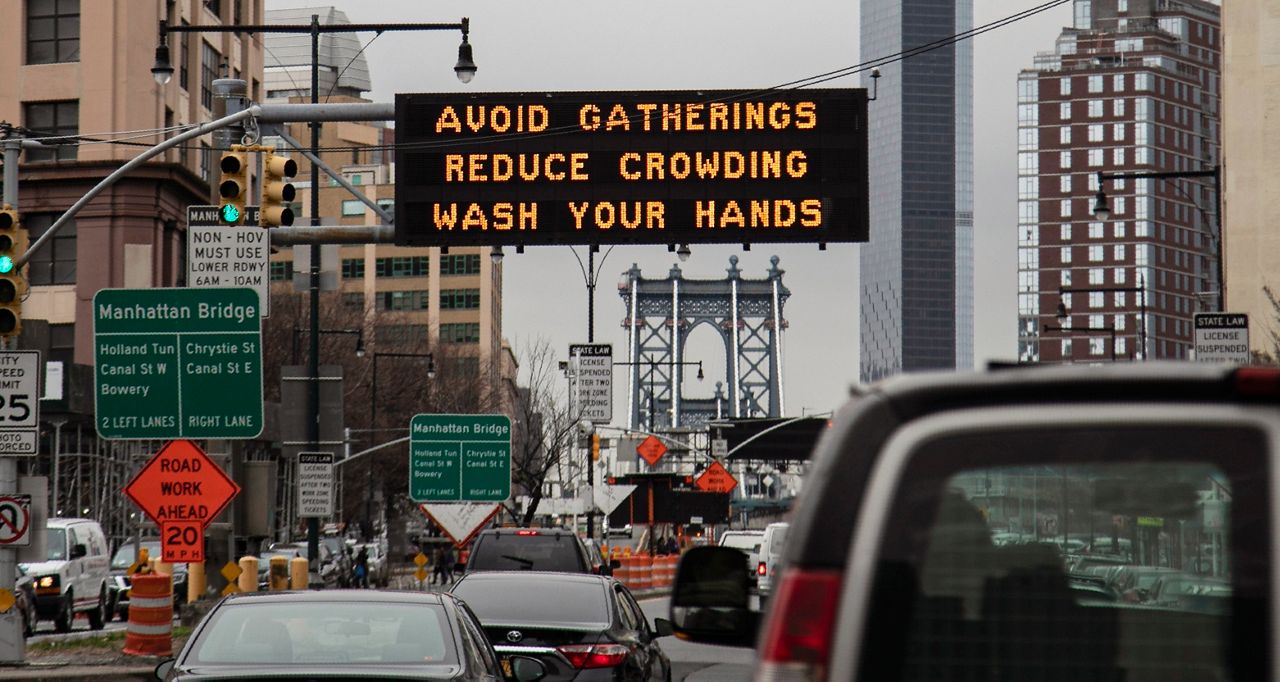After a dramatic spike in infections, cases and deaths around the start of the new year, New York City has seen its COVID-19 statistics slowly decline into the spring.
While the declines have not been as significant as many health experts have hoped, rates of hospitalizations, new cases, infections and deaths are lower than they’ve been for several months.
New York Gov. Andrew Cuomo has been steadily easing restrictions on gatherings, restaurants, spectator events and travel, arguing that he is reopening the state’s economy while sticking to sound public health precautions.
“In my opinion, some states are going too far, too fast,” Cuomo said in March. “And that is a danger because COVID is still a risk. And you relax those restrictions too far, you will see the beast rise up again.”
Yet New York City’s COVID statistics have stagnated instead of continuing to decrease, with its positive test rate, measured as a seven-day average, stalling at around 6% since late February. Other states are seeing similar stalls, and several counties around New York City are seeing a steady uptick in cases. Health experts believe that most of the renewed spread is caused by more infectious variants.
Dr. Rochelle Walensky, the head of the Centers for Disease Control and Prevention, warned this week of a coming “fourth wave” of the virus, driven by highly infectious variants and lessened restrictions, and spoke of a sense of “impending doom.”
President Joe Biden called on state governors to pause their reopening plans and reinstate mask mandates, if they had rescinded them. (New York still has a mask requirement.)
“Please, this is not politics, reinstate the mandate if you let it down," Biden said Monday.
Some health experts and politicians worry that New York is one of the states moving too quickly to reopen, in some cases expressing concern that Cuomo is easing COVID-19 restrictions to score political points as he takes on multiple scandals.
“Is this being done because of what the data and science is telling us or is this being done for political reasons?” Mayor Bill de Blasio said at a press conference in early March. “Because it sure as hell looks like a lot of these decisions are being made by the governor because of his political needs.”
Cuomo has linked the eased restrictions with COVID-19 vaccines, and the state’s expanding vaccination program. Currently, New Yorkers aged 30 and up are eligible for the vaccine, as are a wide array of professions and medical conditions. About 31% of state residents aged 18 years and older have received at least one dose of a COVID-19 vaccine, putting New York in the middle of the pack of U.S. states and territories, according to a New York Times count.
"New York is moving forward with reopening our economy and looking forward to a post-COVID world," Cuomo said last month. "We know the vaccine is the weapon that defeats this invisible enemy and we are getting more shots in arms than ever before."
Here are the current restrictions that remain in New York City on gatherings, dining out, travel and more.
Gatherings
First, residential gatherings: The cap for indoor gatherings remains at 10 people, while outdoor gatherings can have 25 people. Face masks and social distancing is required.
Yet other kinds of indoor gatherings, such as weddings and religious services, have other rules.
Religious services, including funerals, must cap attendance at 50% of the venue’s capacity. Wedding venues must also enforce 50% capacity, with a total cap of 150 people present. Wedding guests must also show proof of vaccination or a recent negative COVID-19 test, and dancing is only allowed in designated areas that are large enough to have distance between dancers.
In public spaces, gatherings can have up to 100 people, and outdoor gatherings can have up to 200 people, with masks and social distancing required.
Sports and Entertainment
Spectator sports have also resumed, both indoors and outdoors, with a 20% attendance cap. Attendees are also required to show either proof of vaccination or of a recent negative COVID-19 test, and remain in their (socially distanced) assigned seats.
Beginning April 2, theaters and other cultural venues can also reopen, with a 33% attendance cap. If the venue requires proof of vaccination or a recent negative COVID-19 test, they can host up to 150 people indoors or 500 people outdoors. Without those requirements, indoor attendance is capped at 100, while outdoor attendance is limited to 200.
Travel
As of April 1, New York is relaxing a number of travel restrictions.
People arriving in New York via domestic travel no longer have to quarantine for 14 days, though the state is encouraging them to do so as a precaution. Arriving travelers are also asked to monitor their symptoms for 14 days, and contact a public health authority or their health provider if they develop symptoms.
If you are fully vaccinated and it’s been at least two weeks since you got your final shot (and you have no COVID-19 symptoms) you do not need to quarantine.
For full information about New York’s travel requirements, click here.
Restaurants and businesses
Cuomo has been steadily increasing indoor dining capacity for restaurants. Currently, in everywhere in New York state besides New York City, restaurants can fill their indoor dining rooms to 75% capacity.
Indoor restaurant capacity for New York City, however, remains at 50%. The 11 p.m. curfew for restaurants and bars, however, is remaining for now.
Starting April 5, however, the 11 p.m. curfew for places like gyms, bowling alleys, casinos and pool halls will lift.



